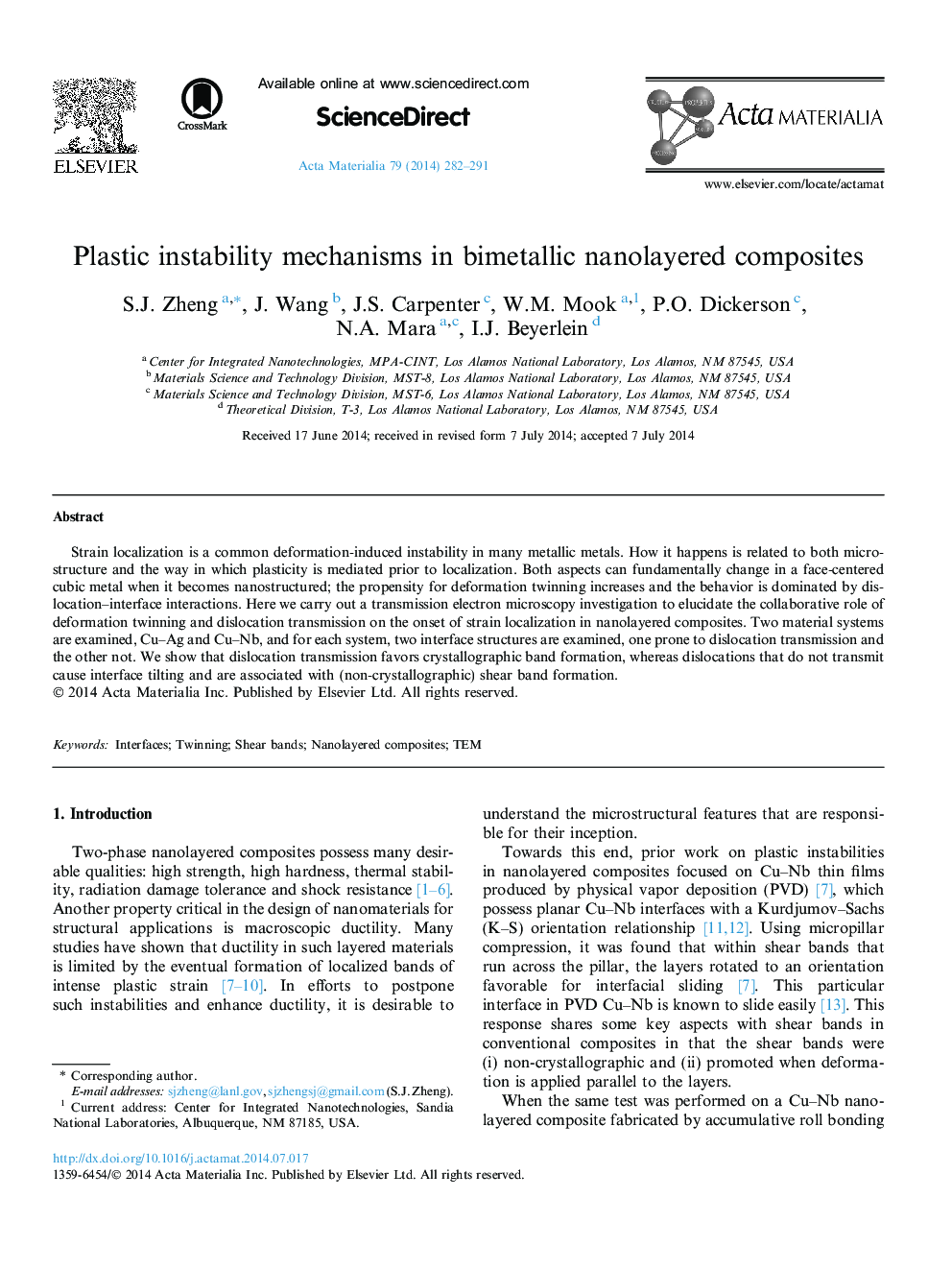| Article ID | Journal | Published Year | Pages | File Type |
|---|---|---|---|---|
| 7881173 | Acta Materialia | 2014 | 10 Pages |
Abstract
Strain localization is a common deformation-induced instability in many metallic metals. How it happens is related to both microstructure and the way in which plasticity is mediated prior to localization. Both aspects can fundamentally change in a face-centered cubic metal when it becomes nanostructured; the propensity for deformation twinning increases and the behavior is dominated by dislocation-interface interactions. Here we carry out a transmission electron microscopy investigation to elucidate the collaborative role of deformation twinning and dislocation transmission on the onset of strain localization in nanolayered composites. Two material systems are examined, Cu-Ag and Cu-Nb, and for each system, two interface structures are examined, one prone to dislocation transmission and the other not. We show that dislocation transmission favors crystallographic band formation, whereas dislocations that do not transmit cause interface tilting and are associated with (non-crystallographic) shear band formation.
Related Topics
Physical Sciences and Engineering
Materials Science
Ceramics and Composites
Authors
S.J. Zheng, J. Wang, J.S. Carpenter, W.M. Mook, P.O. Dickerson, N.A. Mara, I.J. Beyerlein,
